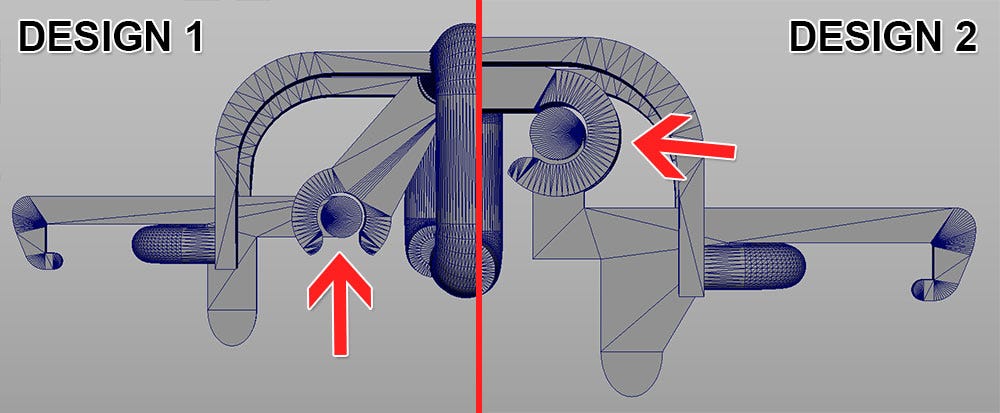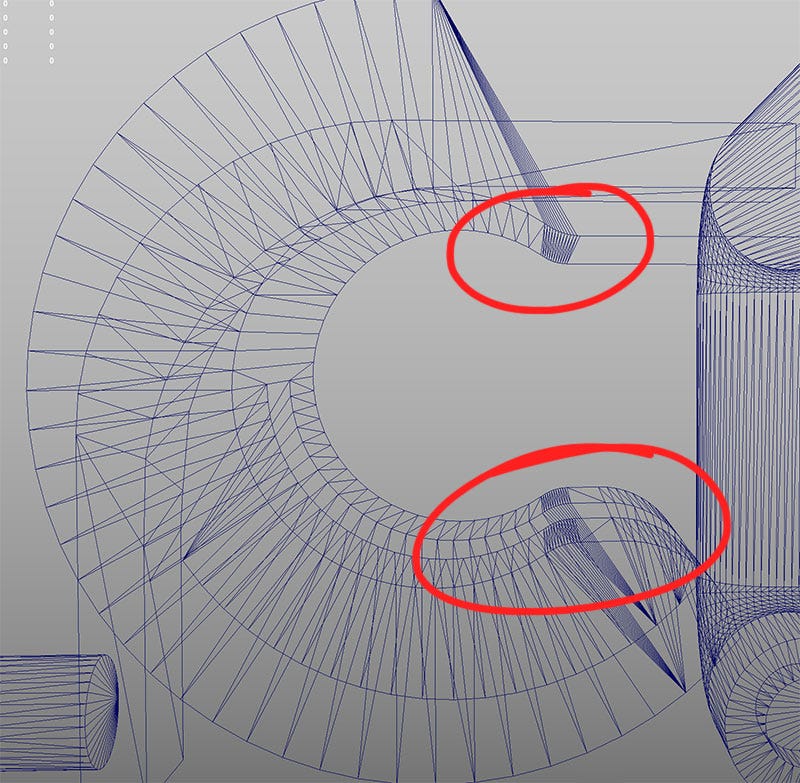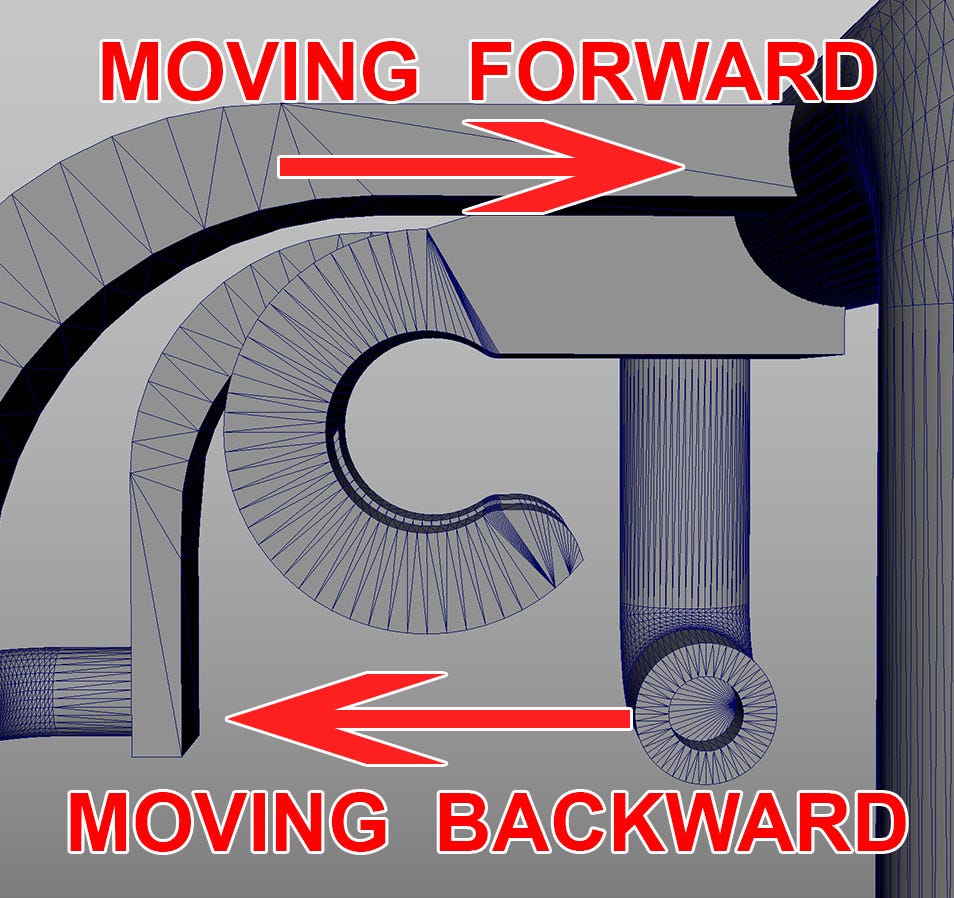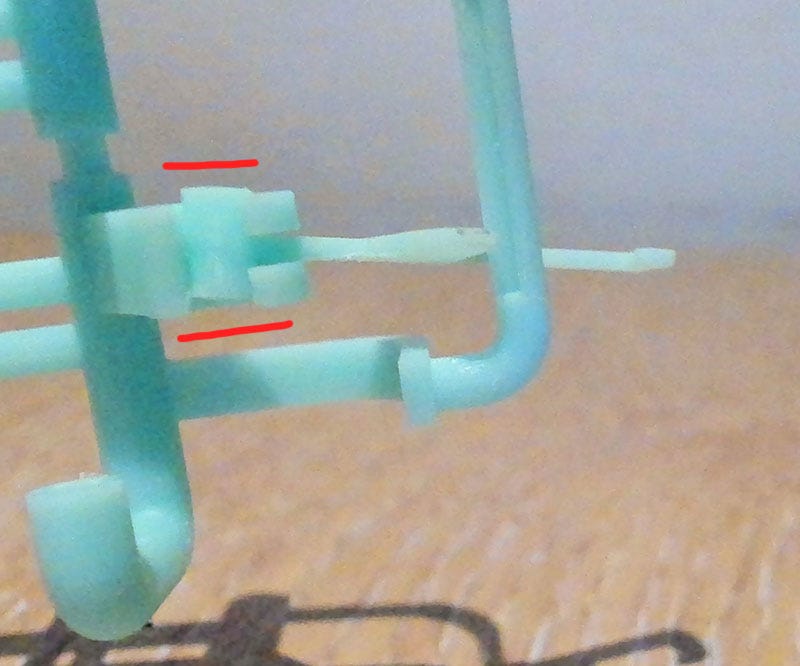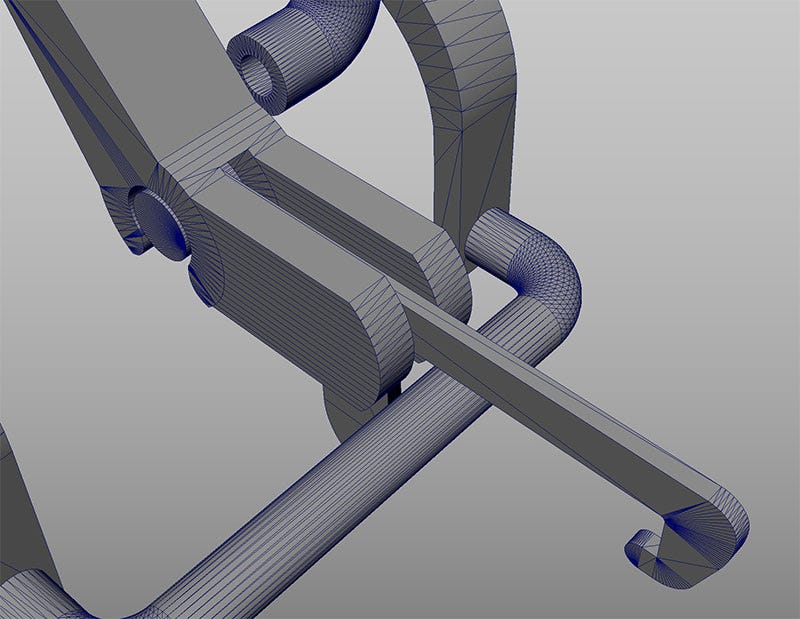It’s Good Enough
Another perfect print with both hook arms working… as well as could be expected. The height issue is fixed, but it highlights further problems with various weights.
In my previous print the clip which holds the coupling hooks in place was too low and hitting decoupling points on the track. The simplest solution, while retaining integrity, is to raise the clips.
They don’t need to be raised much, however I choose to go a little extreme for the sake of caution. Decoupling functionality was negatively affected slightly and it’s answered some questions about future designs. Winning.
The first solution was to move the clamp to be in line with the protruding part of the hook. My second idea was to raise the clamps so the pivot point was high above the clip. Why? Why not?
I was highly sceptical of the second design having enough force to reset the hook, but in that sense it works almost as well as the inline design. The higher clamp fails to reset ever so slightly more often. It’s not frequent enough to abandon the idea.
An issue with both designs is the hook’s too light. On commercial plastic models hooks are metal. Thinking this may be an issue, additional mass was added to design 2. It made zero difference from what I could tell.
Actually, there are multiple issues; weight, friction, flexibility and print tolerances.
Forever Problems
Weight is a concern at the moment, though it should lessen as models are built up. These frame templates weigh almost nothing. When my chassis, with metal wheels or printed, hits a decoupling mechanism it almost always derails. That’s not ideal.
A part of this is due to the lower end of the hook pivot. If it were smoothed down and rounded more, this should alleviate the issue. Both front and back areas will need work as the train can travel forwards and backwards!
The inner area of the clamps is slightly rounded to make removing the hooks easier. I think this slight rounding is causing the cylinder to sometimes grab and lock in place. Due to how little the hook weighs, there’s not enough force to bring it back down. I can’t add more weight. Any thicker and the clamps will need to be enlarged, making it trickier to pass over decoupling mechanisms.
Why should I care about removing the hooks? At least in a single piece. If the hook snaps and needs replacing, why not use a tool to crush the remaining hook element and let it fall out? The smoothed inner area of the clamp can then be removed in favour of a sharp edge. This should make a slightly smoother rolling action for the hook.
An issue with the clamps facing inwards, so the hook slides in horizontally, is that the hook pivot is pushed back when hitting a decoupler. Obviously that pushes it harder in to the open section of the clamp, making it harder to pivot.
This slipped my mind when designing it because I only considered the train travelling in 1 direction. If the mechanism was at the rear of the train, the decoupling force would be reversed and not an issue. There’s no gap.
It is an issue. Again, not a huge one. Decoupling works but the mechanism is more prone to becoming stuck in a raised position. Depending on which direction the vehicle is moving and the direction of the open clamp area.
Print tolerances annoy me. With the same settings, on the same day, the same print may be off by a few microns. Therefor any moving parts needs a decent amount of play to cater for inconsistent print sizing.
The image above is a consequence of being too tolerant. There’s a gap of about 0.1 mm between the pivot point and the clamp. Doesn’t sound like much but it causes quite the wiggle.
I don’t want to change these tolerances given hoe reliably they’re printing. Maybe with a higher resolution printer I would, but not with my current setup. This does go against my policy of printing too large and filing down, but these parts are very small and I’m a dent head. I will end up snapping them and ruining the print.
A possible fix could be to keep the clamp as it is, though extend the thin slot for the hook further towards the grab bar? This would create a channel to hold the hook steady. I don’t think it would work for every design, but is something to consider.
The Future
After all that, it would appear the basic downwards facing clamp is the way to go. There are more designs I could try, but I don’t intend on ever using a decoupling system and these designs are for me. If I need to unhook a train, I’ll use my hands.
So long as my hooks are the correct height and grip firmly on production sets, which they do, I’m declaring victory.
Designing the wheels, chassis, clamps and figuring out correct measurements has been very tedious. I’ve learnt a lot but learning isn’t fun.
With all my templates saved, I get to design my rolling stock. That’s going to be fun. Long, sleepless, fun!






